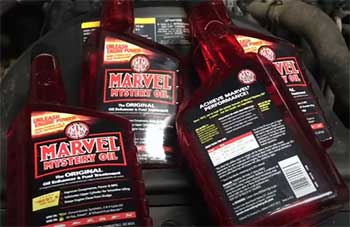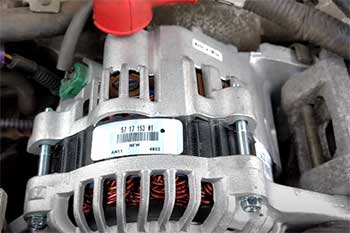Listen up, folks—if you’re hauling heavy loads, towing trailers, or just tired of your truck feeling wobbly on the road, you need to get your hands on a RoadActive Suspension (RAS) kit. I’m not here to waste your time with fluff; this is the real deal.
After wrestling with saggy springs and sketchy handling on my own rig, I took the plunge and installed RAS, and let me tell you, it’s a game-changer. Whether you’re a weekend warrior or a daily driver, this product promises to level up your ride—literally and figuratively.
Trust me, you’ll want this in your garage ASAP.
My Experience With RoadActive Suspension
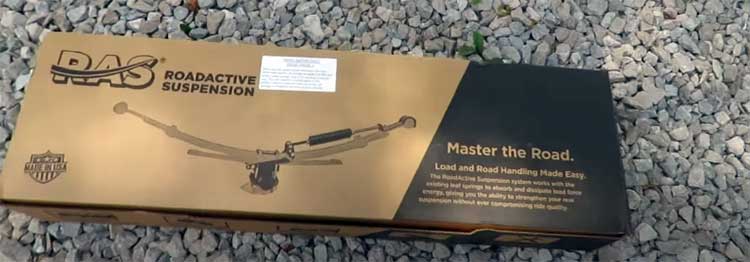
Let me paint you a picture. I’ve got a 2005 Ford F-350, a beast of a truck that came with a front leveling kit already slapped on. Sounds great, right?
Well, not so much when I started loading it up. Even a modest payload had the rear end squatting like it was doing a bad yoga pose, and high-speed curves?
Forget about it—felt like I was steering a boat. I’d heard about RoadActive Suspension through some truck forums and figured it was worth a shot. I mean, anything to stop that uneasy sway had my vote.
The install day rolled around, and I’ll admit, I was a bit nervous. I’m no mechanic, but I’ve turned a wrench or two in my time. The kit arrived with clear instructions—thank goodness—and I got to work. Jacked up the truck, popped off the rear tires, and started fitting the RAS springs.
It took me a couple of hours, mostly because I was triple-checking everything like a paranoid dad assembling a crib. But once it was on? Oh man, I could feel the difference before I even turned the key.
First test drive, unloaded, I noticed the rear sitting about two inches higher with the 2mm spacer in place. It wasn’t just the height, though—the firmness kicked in without making the ride feel like I was bouncing on a pogo stick.
I took it through some twisty backroads, and where I used to brace myself for body roll, the truck hugged the curves like it had something to prove. Cornering stability? Night and day. Then came the real test: hooking up my travel trailer with a 900-pound tongue weight.
Normally, that’d drop the rear and leave me white-knuckling the wheel over every bump. With RAS? The truck stayed level, and the porpoising—you know, that annoying up-and-down bounce—was almost gone.
I tweaked it down to a 1.5mm washer setup later because I wanted a slightly softer feel unloaded, and now it’s dialed in perfectly. I’m hooked, and honestly, you will be too.
Pros of RoadActive Suspension
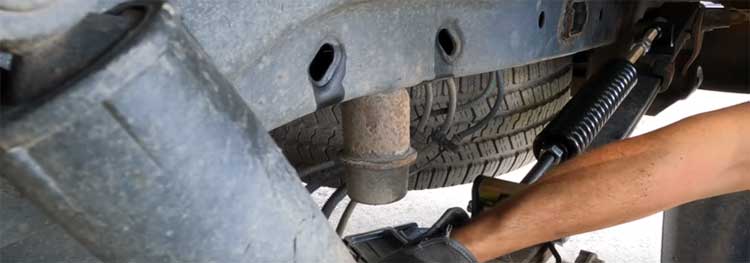
- Improved Stability and Handling
Let’s talk about the star of the show: stability. Before RAS, my truck felt like it was auditioning for a pirate ship in a storm—swaying side to side, especially when I’d hit a bump mid-turn.
Now?
It sticks to the road like it’s got glue on the tires. Whether I’m towing or just cruising, the control is unreal. You’ll feel it too—those high-speed corners won’t have you gripping the wheel like it’s a life raft anymore.
- Easy Load Leveling
If you’ve ever hooked up a trailer and watched your truck’s rear end sink like it’s ashamed, RAS fixes that in a snap. My F-350 used to squat under my trailer’s weight, but with RAS, it holds its ground.
The best part?
It’s adjustable. I started with a stiffer setting and dialed it back to fit my needs. You can tweak it to keep your rig level no matter what you’re hauling—pretty slick, right?
- Smoother Ride Quality
Here’s where I was pleasantly surprised. I figured stiffening the rear would turn my truck into a bucking bronco, but RAS keeps things smooth. Bumps don’t jolt me like they used to, and even unloaded, the ride feels refined for a big truck.
It’s not just about comfort—it’s about confidence. You’ll notice the difference the second you roll over a bridge joint or pothole.
- Simple Installation
I’m no pro, but installing RAS didn’t make me want to pull my hair out. The instructions were straightforward, and with a jack and some basic tools, I had it done in an afternoon.
You don’t need a fancy shop or a buddy who owes you a favor—just a little patience. If I can do it, you’ve got this in the bag.
- Durability That Holds Up
After months of use, my RAS kit still looks and works like new. No rust, no weird noises—just solid performance. I’ve heard from other users who’ve put theirs through years of heavy towing, and it keeps on ticking.
You’re not just buying a quick fix; you’re investing in something that’ll stick around.
Cons of RoadActive Suspension
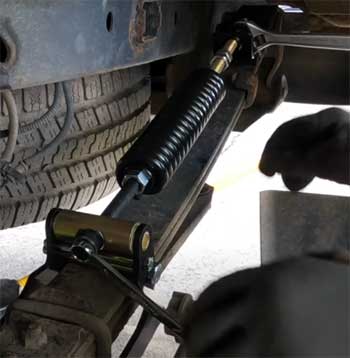
- Initial Cost Can Sting: Let’s be real—RAS isn’t cheap. Depending on your truck and the kit, you’re looking at a few hundred bucks. For me, it was worth every penny, but if you’re on a tight budget, that price tag might make you pause. You’ve got to weigh whether the performance boost justifies the hit to your wallet.
- Ride Height Adjustments Take Effort: While it’s adjustable, tweaking the tension isn’t a five-minute job. I had to crawl under the truck with a wrench to swap spacers when I wanted a softer feel. It’s not a dealbreaker, but if you’re constantly switching between heavy loads and empty runs, it might get old fast. Plan ahead, and you’ll be fine.
- Not a Payload Miracle: Don’t get it twisted—RAS doesn’t magically increase your truck’s payload capacity. It helps with sag and handling, but if you’re overloading your rig beyond what it’s rated for, you’re still asking for trouble. I learned that from a tech rep when I called about my factory overloads. It’s a helper, not a superhero.
- Potential for Over-Firming: Crank the tension too high, and you might feel it in your spine. I started with the stiffest setting and found it a bit much unloaded—firmness is great, but there’s a sweet spot. You’ll need to experiment to find what works for you, which could mean a few trips under the truck.
Maintenance Tips For RoadActive Suspension
- Keep It Clean: Your RAS kit lives under your truck, where dirt, salt, and grime love to party. I make it a habit to hose mine down every few months, especially after winter roads try to eat it alive with salt. A quick spray keeps corrosion at bay and ensures those springs stay spry. You’ll thank yourself when it’s still rust-free years down the line.
- Check Tension Regularly: The adjustable feature is awesome, but it’s not “set it and forget it.” I check mine every couple of months or after a big towing trip to make sure it’s still where I want it. A loose bolt or shifted spacer can throw off the vibe, so grab a wrench and give it a once-over. It’s quick and keeps everything humming.
- Lubricate Moving Parts: Those tension springs and bolts? They’ll last longer if you show them some love. I hit mine with a shot of spray lubricant every six months or so—nothing fancy, just enough to keep things sliding smoothly. It’s a small step that saves you from bigger headaches later.
- Inspect for Wear: Even tough gear wears out eventually. I peek at my RAS kit during oil changes to spot any cracks, bends, or weirdness. So far, so good, but catching a problem early means you’re not stranded with a sagging truck mid-trip. Keep your eyes peeled, and you’ll stay ahead of the game.
- Pair with Quality Components: When I added RAS, I tossed in an add-a-leaf for extra oomph, and it’s been a winning combo. If your springs or shocks are shot, RAS can only do so much. Make sure the rest of your suspension is up to snuff, and you’ll get the full bang for your buck.
Comparison of RoadActive Suspension With Other Brands
- RoadActive Suspension Vs. Air Bags
Air bags are the flashy cousin in the suspension family—adjustable on the fly with a compressor, which sounds cool, right?
I’ve tried them on a buddy’s truck, and yeah, they level loads like champs. But here’s the rub: they’re pricey, and leaks or pump failures can leave you cursing. RAS, on the other hand, is a one-and-done install—no fussing with air lines or electronics.
You trade some adjustability for simplicity and reliability, and for me, that’s a win.
- RoadActive Suspension Vs. Helper Springs
Helper springs are the old-school fix—cheap and effective for heavy loads. I had them on an older rig, and they worked, but the ride unloaded was like sitting on a brick.
RAS brings a smoother feel and better handling, even when I’m not towing. It’s more refined, though you’ll pay more upfront than those budget helpers.
- RoadActive Suspension Vs. Add-a-Leaf Kits
I actually paired RAS with a Skyjacker add-a-leaf, so I’ve got firsthand experience here. Add-a-leafs boost height and capacity, but alone, they can stiffen things up too much. RAS adds finesse—less bounce, more control.
If you’re choosing one, RAS wins for daily driving, but combining them like I did might be your sweet spot if you haul serious weight.
- RoadActive Suspension Vs. Full Suspension Overhauls
Some folks go all out with custom leaf packs or coilovers, and sure, that’ll transform your truck. I talked to a guy at a shop who swore by his $2,000 setup, and it sounded amazing—for his race truck.
For me, RAS hits the practical sweet spot: affordable, effective, and no need to reinvent the wheel. You’re not getting a full overhaul, but you’re not shelling out insane cash either.
Also Read: Is Arnott Air Suspension Worth It?
Frequently Asked Questions (FAQ)
You bet it does. I’ve felt the difference towing my trailer and zipping around corners—less sag, better control, smoother ride. It’s not hype; it delivers. If your truck’s struggling with loads or stability, RAS steps up big time.
For me, absolutely. The improved handling and peace of mind towing? Priceless. But it’s not for everyone—if you rarely haul or don’t mind a little sway, you might not need it. Weigh your driving habits against the cost, and you’ll know.
It varies by truck model, but expect to drop $300 to $500. Mine was on the higher end with shipping, and yeah, it’s a chunk of change. Check their site or call—they’ll hook you up with the exact price for your rig.
RAS is a rear leaf spring upgrade that bolts onto your truck’s existing suspension. It’s like giving your springs a backbone—reduces squat, cuts sway, and boosts stability. Think of it as a wingman for your truck, making every drive safer and smoother.
Wrapping Up
So, here’s the deal: if you want your truck to handle like a pro, tow without drama, and ride smoother than ever, grab a RoadActive Suspension kit. I’ve lived it, and I’m sold—my F-350 went from shaky to rock-solid, and yours can too.
Don’t wait for another bouncy, saggy trip to convince you; this is the upgrade you didn’t know you needed. Head to their site, pick your model, and get ready to love your truck all over again. You won’t regret it—I sure don’t!
